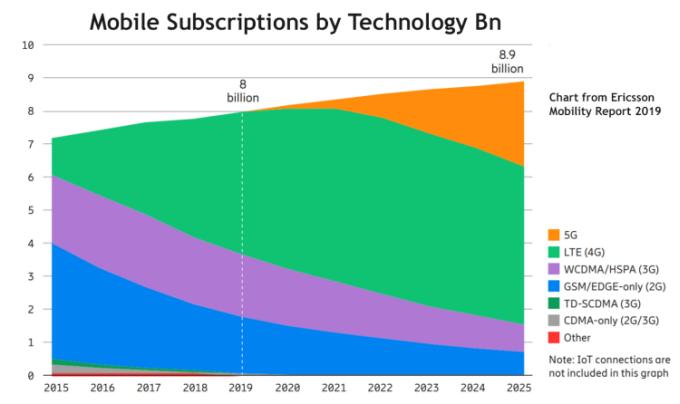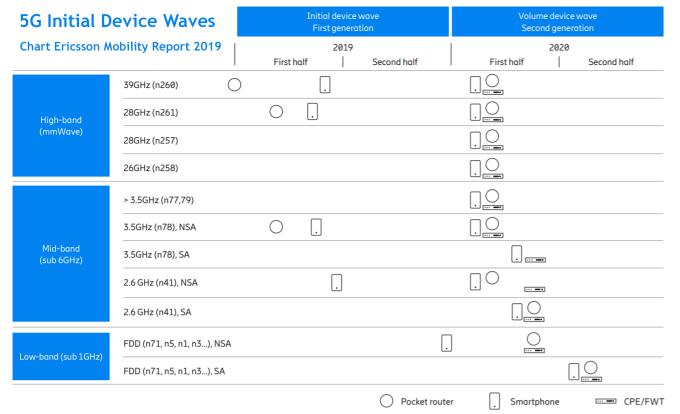The November 2019 Ericsson Mobility Report just issued shows 8Bn mobile subscriptions worldwide at the end of 2019 growing to 8.9Bn by the end of 2025.
While the growth in subscriptions is limited (the World’s population is 7.75Bn and growing at 1.1% annually) Ericsson say that data carried on world mobile networks will grow by a factor of four from 39 Exabytes per month at the end of 2019 to 160 EB per month (76% of it being video) at the end of 2025. Data consumed per smart phone in the World will go from an average of 7.5GB per month to 24GB over the same period.
Over the next six years Ericsson predicts smart phone subscriptions, which in 2019 are 70% of World subscriptions, will grow from 5.6Bn (2019) to 7.4Bn in 2025 and by then be 83% of all subscriptions. In the same period 5G subscriptions are projected to grow to 2.6Bn and be available to 65% of the World’s population. Ericsson say this is the fastest take up of any mobile generation.
Ericsson separately projects IoT connections to grow from 10.8Bn at the end of 2019 to 24.9Bn in 2025. Most of these will be short range connections principally WiFi, Bluetooth Zigbee and Z-Wave however Ericsson predicts that cellular IoT presently serviced by 3G WCDMA/HSPA and 4G NB-IoT and Cat-M1 networks will grow from 1.2Bn in 2019 to 5.0Bn (20% of total IoT subscriptions) by 2025. Ericsson projects less than 2% (400 million) of IoT connections will be using unlicensed low-power technologies like Sigfox and LoRa by 2025.
Ericsson charts the short term (2019 and 2020) 5G device availability in its report. It predicts the rapid take up of 5G from 2020 in advanced markets assisted by wide availability of second generation devices in 2020. This new wave of devices will support Stand Alone NR, a wider range of 5G bands, spectrum sharing – particularly with 4G low band for coverage, lower power consumption – fully integrated 5G baseband modems and 5G channel aggregation.

